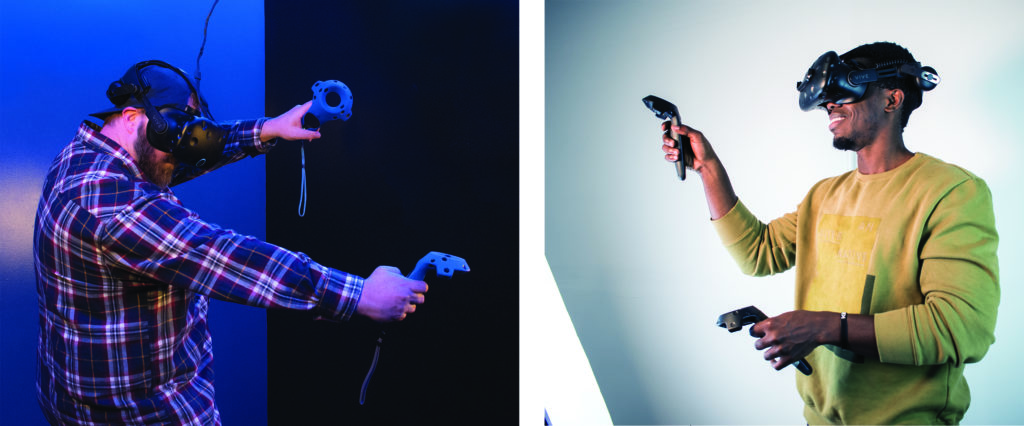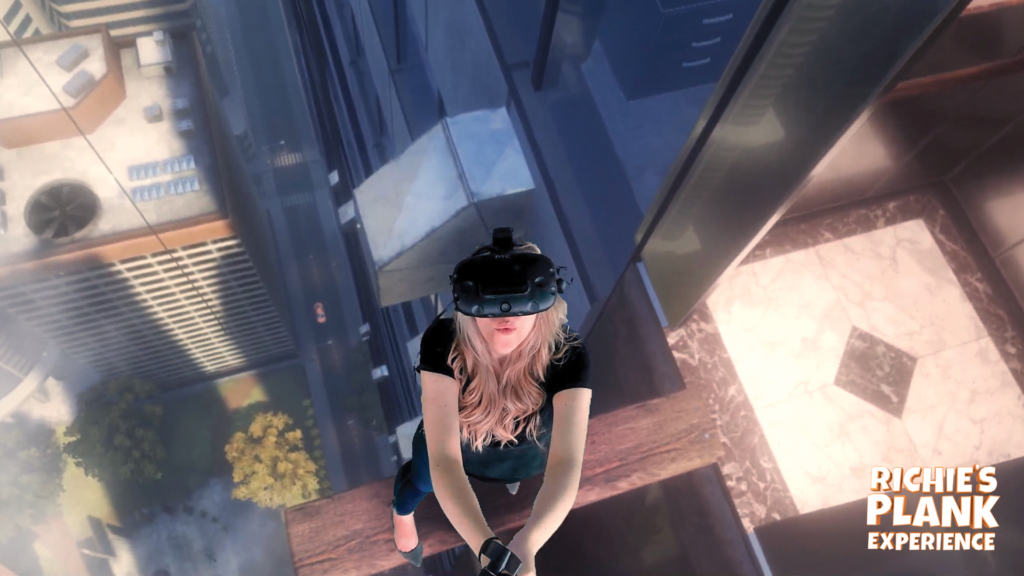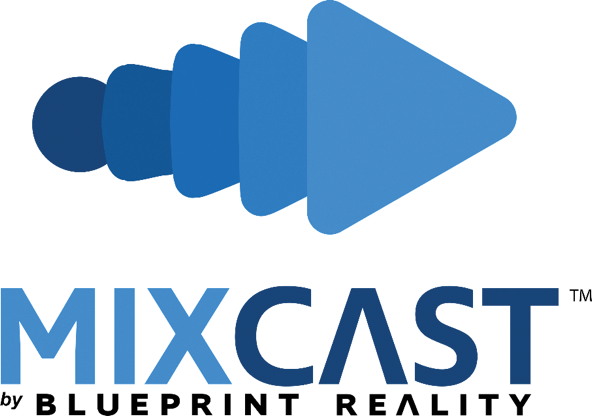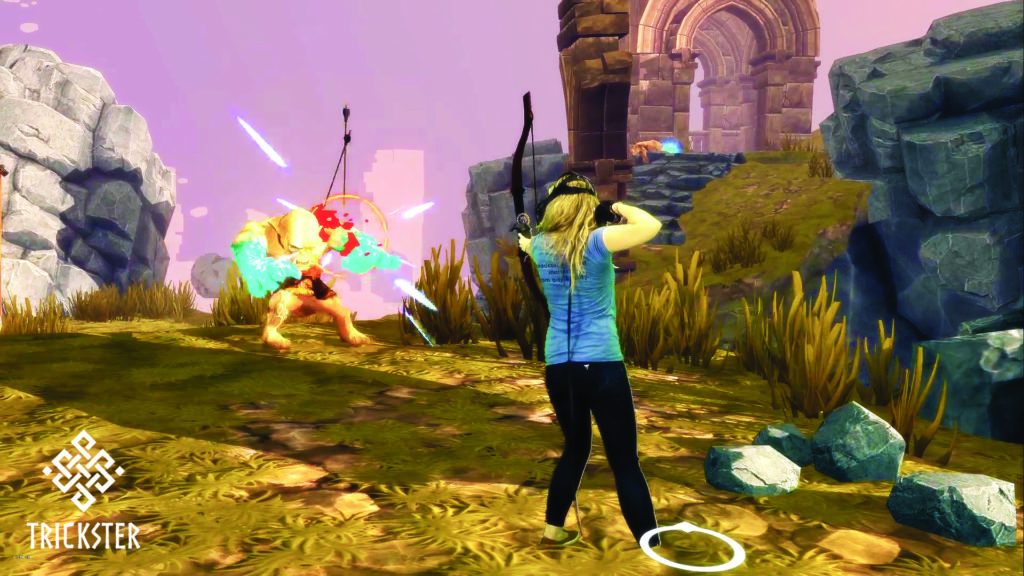

MixCast Wants to “Show the Way” in VR
Company Hopes to Help Show What VR Truly Feels Like
Most photographers know that there’s power in seeing your subject’s eyes, but with head-mounted displays (HMDs) covering VR players’ baby blues, how should locations try to promote their businesses? Pictures of people immersed in the game with a headset covering their faces were cool, but only for a moment. Also, these photos don’t translate what’s going on in front of the player well enough. The beautifully rendered worlds and adrenaline-filled experiences just can’t be captured with your average picture. How can VR locations capture the fun and immersion of the experience for spectators and as sharable or keepsake imagery for players?
That’s where MixCast comes in. The company, founded in 2017, solves this difficult problem by blending VR users with their virtual world in mixed reality photographs and videos. By using a combination of cameras and software, the solution allows for blending without the need of a green screen. MixCast VR provides a quick and simple one-time setup, and works in real-time so locations can display mixed reality video streams to their in-house customers and even those online.

“VR has a bad reputation of being anti-social. We want people to be able to capture these moments and show that it can be a shared moment,” said Tarnie Williams, co-founder of MixCast. “It’s important to keep spectators engaged, and with this, they’re in the game with the player.”
MixCast has two basic offerings for companies interested in augmenting their VR setup: a simpler, individual booth setup they call their VR Photobooth and a larger, warehouse-scale, friendly VR Freeroam. The Photobooth is meant to be turnkey with what the company says is a simple setup that can transform a single-player installation into a mixed reality marketing tool. The Freeroam is a more customized solution with multiple cameras, allowing larger VR areas with several players to be captured in real-time and transformed into media for upsell or self-promotion.
“The revenue and marketing aspects of VR are biggest challenges we hear about, and I think this helps fix those problems,” Williams said. “It’s not easy to do mixed reality with all the setup and technical knowhow involved. The coolest thing with MixCast is you can do it without a green screen, and the software takes care of the rest.”

Williams and Ben Sheftel came up with the idea for MixCast after creating a VR game, Awaken, for their company Blueprint Reality. The breathtaking puzzle game has a unique, fun look, and the two entrepreneurs were disappointed by limits on how they could share that with specatators. They could show the view from inside the headsets, but first-person perspective from the head of someone who’s looking at the virtual world around them doesn’t translate perfectly to a monitor.
“Your head is a terrible cinematographer,” Williams said. “We saw there was a continued challenge in the VR industry, which is being able to show people who don’t yet get what is going on. Mixed reality immediately came to mind as the solution.”
At first, as MixCast began to roll out to VR arcades, the team would work with operators directly, having them send raw images and videos so they could blend them with the gameplay. Additionally, the early model required partners to have a green screen, which many didn’t want in their location. As the product grew in popularity, Williams and his team realized they needed to up their offerings. Thanks to increased interest from Intel, and the potential of their product, the team was able to develop a system that was able to cut players out from a diverse range of backgrounds, instead of the previously necessary green screen. Next, Williams wanted to simplify things even more.
 “We continued to talk with arcade and free roam operators, and thought, now what? They were copying files and emailing them, but we wanted to make things smooth,” Williams said. “So, we thought let’s go all the way and make a full, end-to-end solution.”
“We continued to talk with arcade and free roam operators, and thought, now what? They were copying files and emailing them, but we wanted to make things smooth,” Williams said. “So, we thought let’s go all the way and make a full, end-to-end solution.”
Today’s system is leaps ahead of where the company started, and includes a platform that allows operators to generate and manage their content on multiple systems simultaneously. MixCast is also offering a touchscreen kiosk with integrated billing where players can stop after their VR session and look through the media at themselves. The current system works with over 100 VR titles, and that roster is growing daily.
“We like to think of it as the new ‘roller coaster photo,’ that iconic, in-the-moment shot that captures what people are feeling as they play in a virtual world,” Williams said.
The company was excited to show off its new system at this year’s IAAPA, and has plenty in store for 2019. Williams and Sheftel were recently named Intel Innovators by the tech giant thanks to their expertise on mixed reality and the work they’ve done with MixCast.
Learn more about the company and its solutions at mixcast.me.

